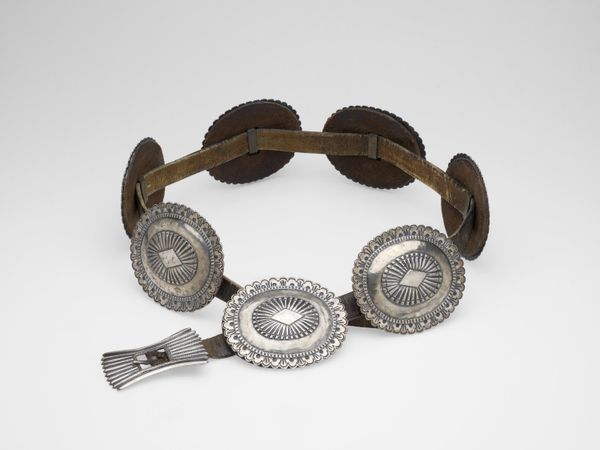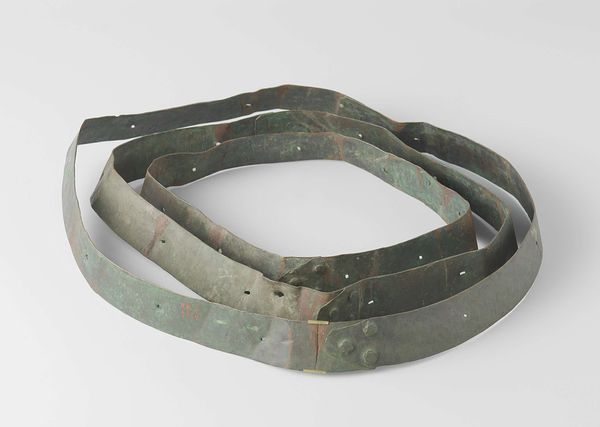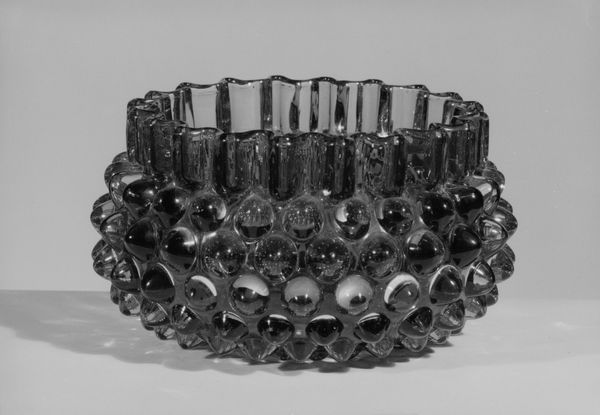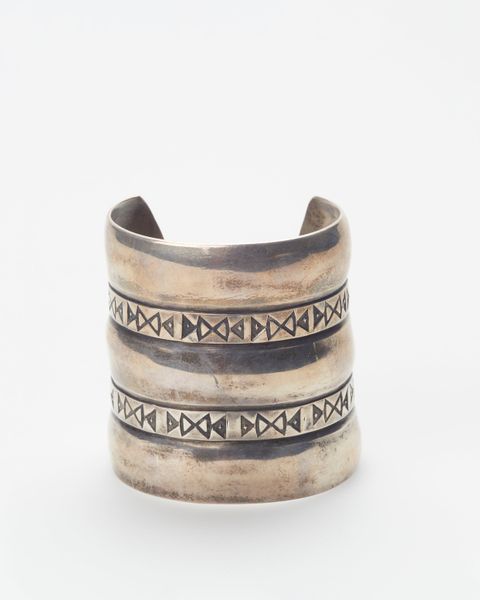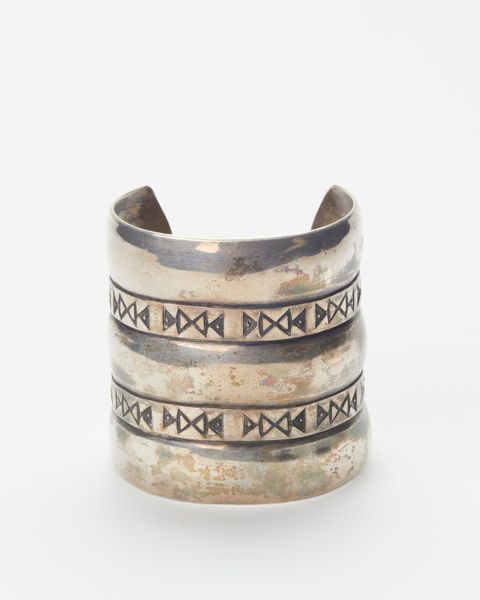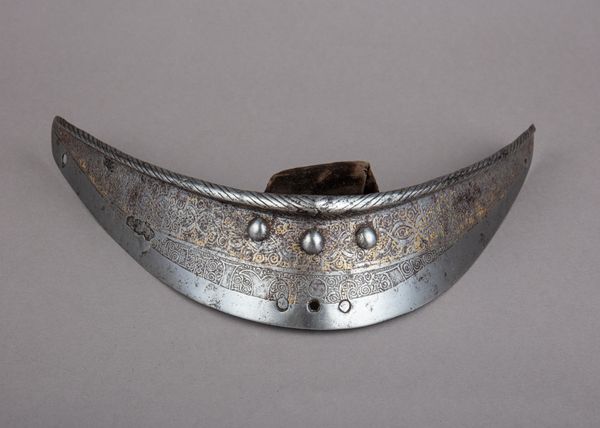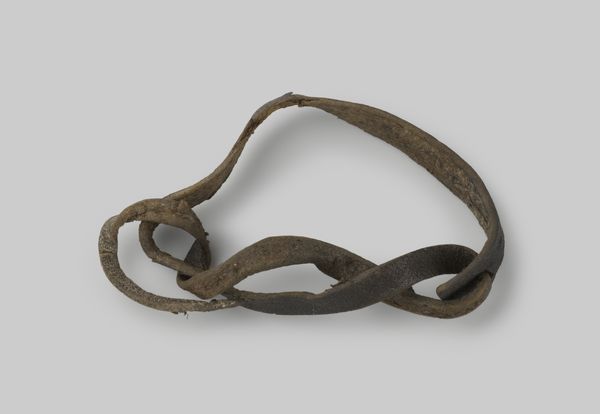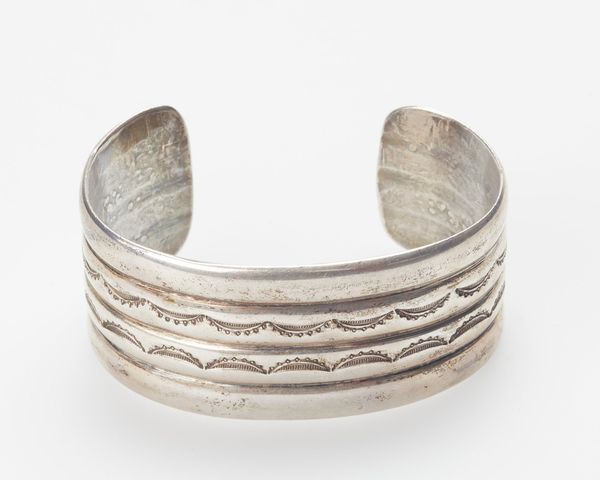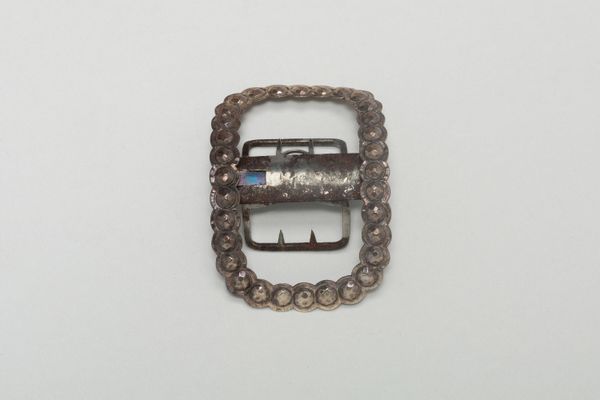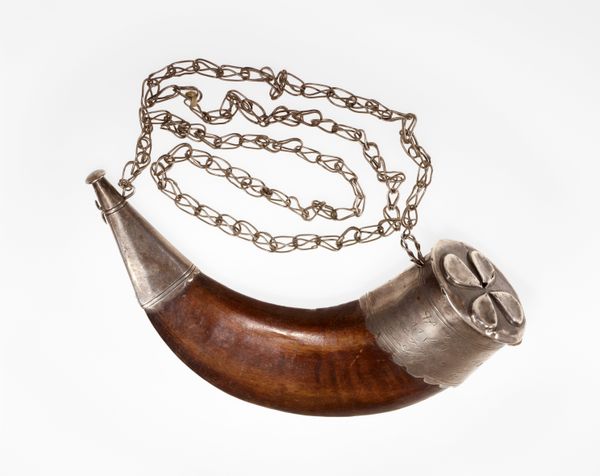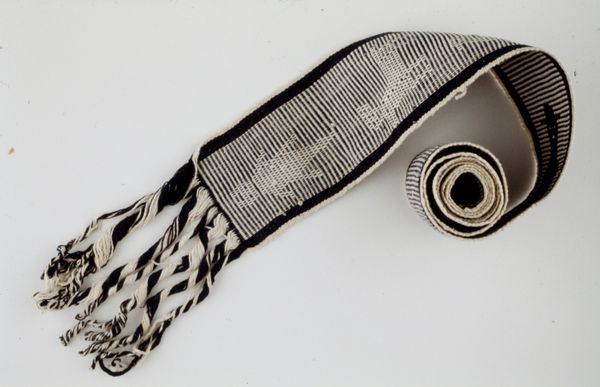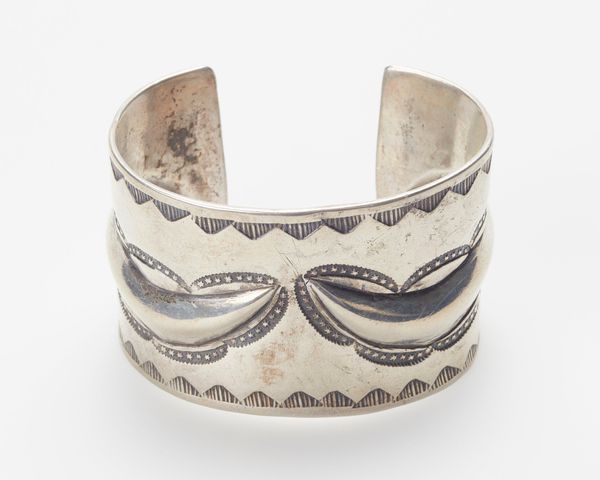
silver, metal
#
silver
#
metal
#
geometric
#
indigenous-americas
Dimensions: L. 101.6 cm (40 in.)
Copyright: Public Domain
Curator: Before us is a Diné, or Navajo, Concho Belt, likely dating between 1880 and 1895, held in the collection of the Art Institute of Chicago. What's your initial reaction to the piece? Editor: It has an immediate, grounding weight to it. You can sense the heft of the silver conchos, contrasting against the dark leather. It speaks of ceremony and status, wouldn't you agree? Curator: Absolutely. And consider the material reality—the silver itself, almost certainly acquired through trade with European Americans. We see an intriguing cultural exchange in the production of these pieces; it showcases a blend of Diné craftsmanship shaped by interactions with expanding trade economies. How were these belts viewed socially and culturally, not merely as ornamentation but as indicators of Diné resilience? Editor: Yes, precisely! The silverworking tradition emerged and evolved under immense pressure from settler colonialism, and these belts become powerful symbols of identity. Museums displaying them now – are we truly addressing that fraught history and showcasing Indigenous voices? Curator: It's imperative that museums contextualize these pieces accurately. The geometric patterns incised upon the conchos – we must appreciate them as visual narratives connected to a world of cultural knowledge. I would like to know more about the labor that goes into creating these objects and the distribution and use of natural resources such as silver and leather. Editor: Agreed, it’s too easy to strip these of their deeper significance by ignoring the context of making, trade, and meaning. We see the legacy of cultural persistence embodied through material production. These weren’t simply beautiful objects; they are expressions of Diné lifeways that were maintained under duress. Curator: Thinking about the Diné artists' engagement with new materials like silver during this tumultuous era really changes my perspective. It underscores not cultural breakdown but transformation. This belt isn’t just about aesthetic design but about asserting agency. Editor: Yes. It’s a powerful artifact, demanding a critical reading that foregrounds history, labor, and resistance. I’ll never look at a Concho Belt the same way again.
Comments
No comments
Be the first to comment and join the conversation on the ultimate creative platform.
